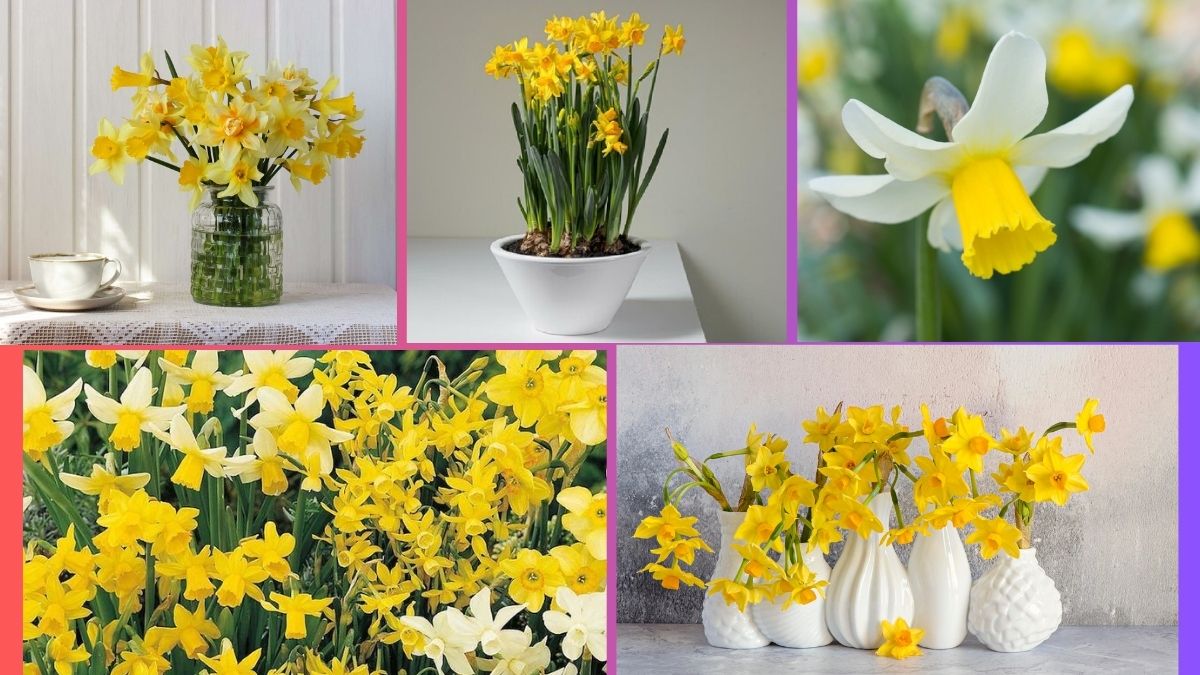Daffodils — with their cheerful yellow, white, or orange blooms — are among the first flowers to announce the arrival of spring. These easy-care, reliable, and hardy perennials are a favorite in gardens, flower beds, containers, and naturalized landscapes. Their beautiful trumpet-shaped blooms symbolize new beginnings, hope, and rejuvenation.
While daffodils are relatively low-maintenance, proper watering is essential for healthy growth, vibrant blooms, and long-lasting bulbs. Watering too much can cause bulbs to rot, while too little can lead to stunted growth and poor flowering. So, if you’ve ever wondered how often should you water a daffodil?, this in-depth guide will walk you through everything you need to know — from seasonal watering schedules to soil considerations, watering techniques, and care tips for thriving daffodils.
Understanding a Daffodil’s Watering Needs
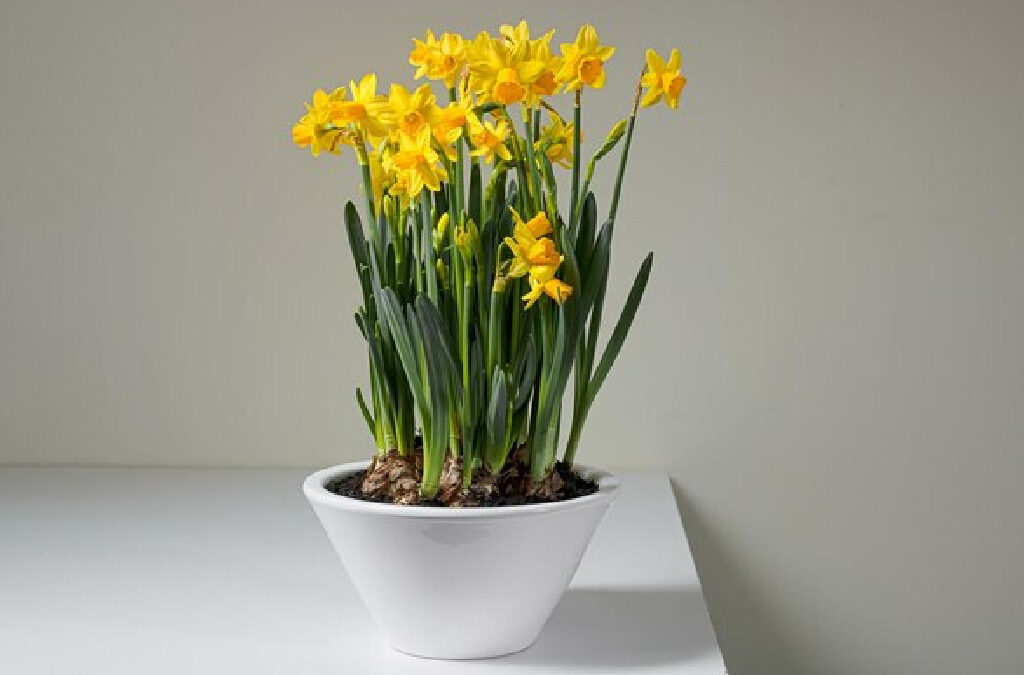
Daffodils (Narcissus spp.) are bulbous plants native to Europe and North Africa, adapted to temperate climates with wet winters and springs followed by dry summers. In their natural habitat, daffodils receive ample moisture during their active growth period and remain dormant during dry seasons.
This growth cycle means that watering needs for daffodils change dramatically throughout the year. During their growing season, they need consistently moist soil. Once they finish flowering and begin dying back, they require much less moisture — and overwatering during dormancy can harm the bulbs.
How Often Should You Water a Daffodil?
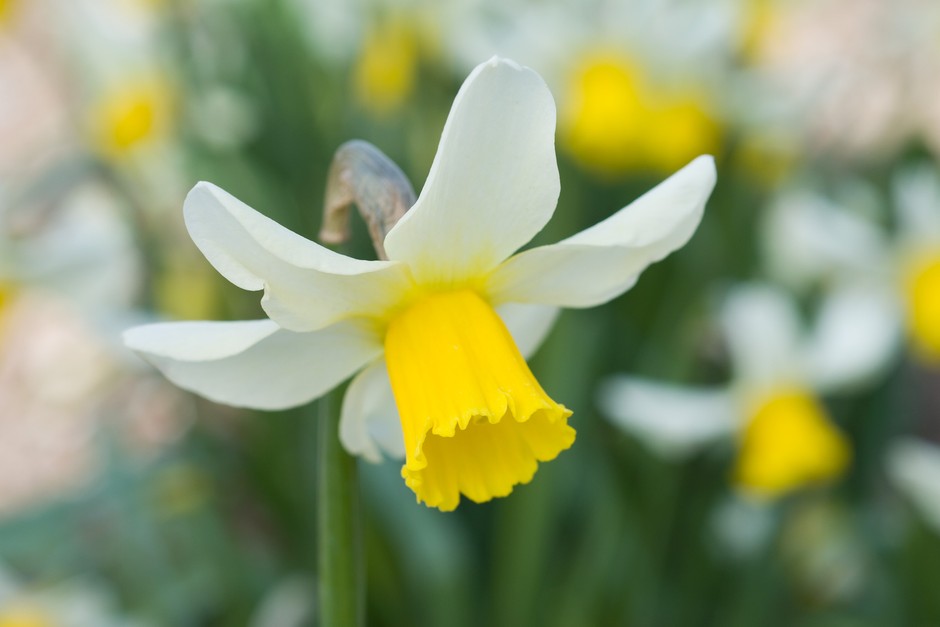
General Watering Guidelines:
- During Active Growth (Spring): Water once or twice a week or when the soil feels dry to a depth of 1–2 inches.
- During Dormancy (Summer): Water sparingly or not at all in regions with summer rainfall.
- Potted Daffodils: Water every 2–3 days during active growth, and reduce to once every 7–10 days after flowering.
Golden Rule: Keep soil evenly moist but never soggy during the growing season, and allow it to dry out when the foliage dies back.
Seasonal Watering Schedule for Daffodils
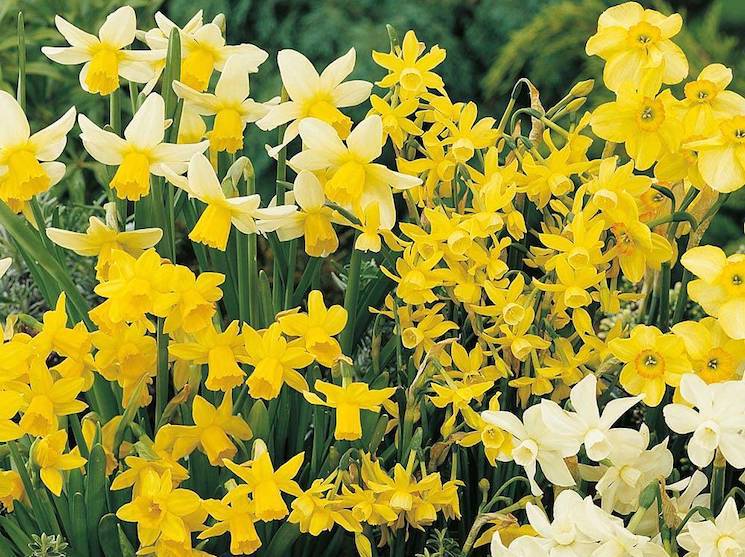
Fall (Planting Season)
Daffodils are typically planted in autumn so they can establish roots before winter.
- Newly Planted Bulbs: Water thoroughly after planting to help settle the soil and encourage root development.
- Continue watering once a week if the fall is dry, until the ground freezes.
Winter (Dormant, Rooting Period)
In colder regions, the soil remains moist from winter rains or snow, which is usually sufficient.
- No extra watering is needed unless winter is unusually dry.
Spring (Active Growth and Flowering)
This is the most important period for watering daffodils.
- In-Ground Daffodils: Water once or twice a week or whenever the soil feels dry 1–2 inches deep.
- Potted Daffodils: Water every 2–3 days, especially in sunny, warm locations.
- Ensure consistent moisture during the weeks leading up to and during blooming.
Tip: Water early in the day to allow foliage to dry before nightfall, reducing the risk of fungal diseases.
Summer (Post-Bloom Dormancy)
After flowering, the leaves turn yellow and die back, signaling the start of dormancy.
- Stop regular watering once the foliage wilts and yellows.
- In areas with dry summers, no watering is needed — daffodil bulbs prefer dry soil during dormancy.
- In regions with rainy summers, ensure soil drainage is excellent to prevent bulb rot.
Factors That Affect Daffodil Watering Frequency
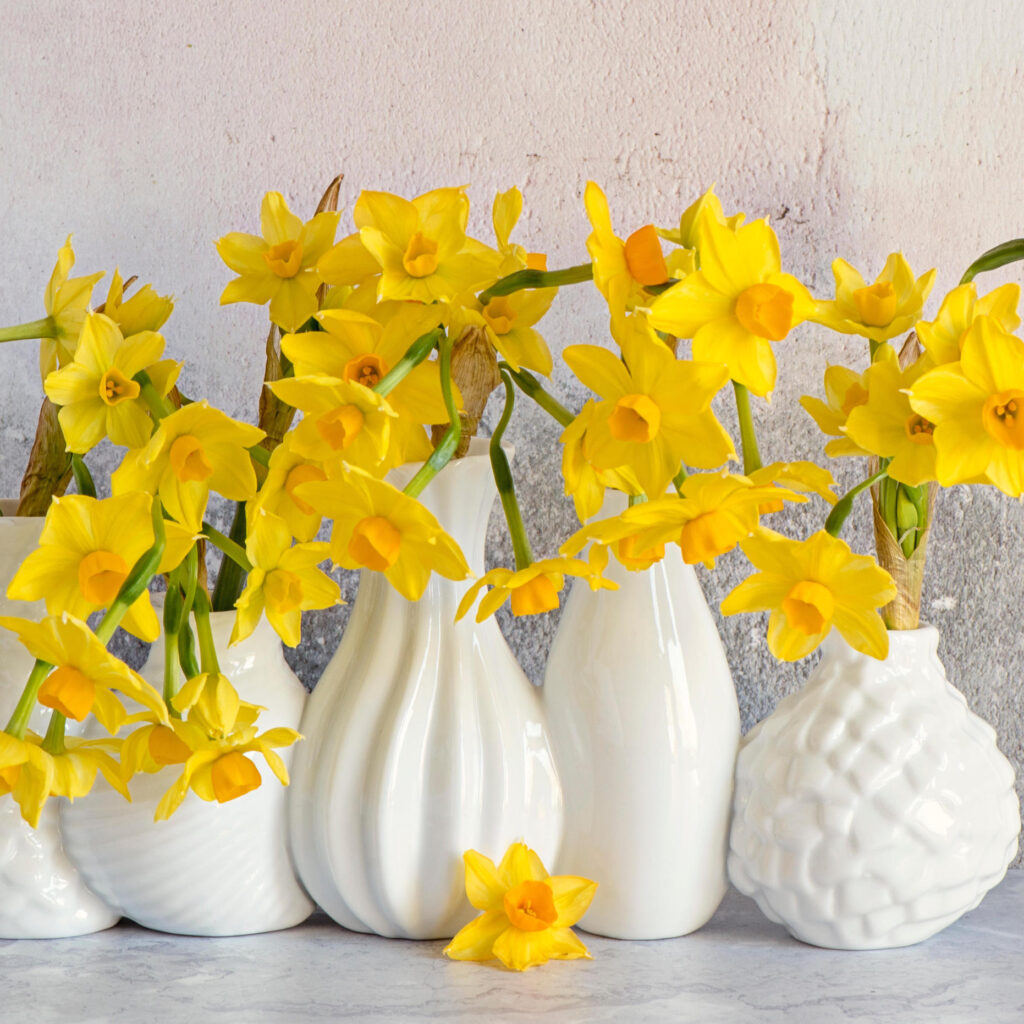
Several variables determine how often daffodils need water:
Climate and Weather
- Warm, dry, and windy weather: Increases evaporation and requires more frequent watering during active growth.
- Cool, rainy, or humid conditions: Reduce watering needs.
Soil Type
- Sandy soil: Drains quickly and dries out faster, needing more frequent watering.
- Clay soil: Retains moisture longer, but good drainage is crucial to avoid bulb rot.
- Loamy soil: Ideal for daffodils — it holds moisture while allowing excess water to drain.
Planting Location
- Sun-exposed areas: Dry out faster and require more frequent watering.
- Shady or partially shaded spots: Retain moisture longer.
Container Size and Material
- Small or shallow pots dry out quickly and may need daily watering during hot spells.
- Terracotta pots evaporate moisture faster than glazed ceramic or plastic containers.
How to Properly Water a Daffodil
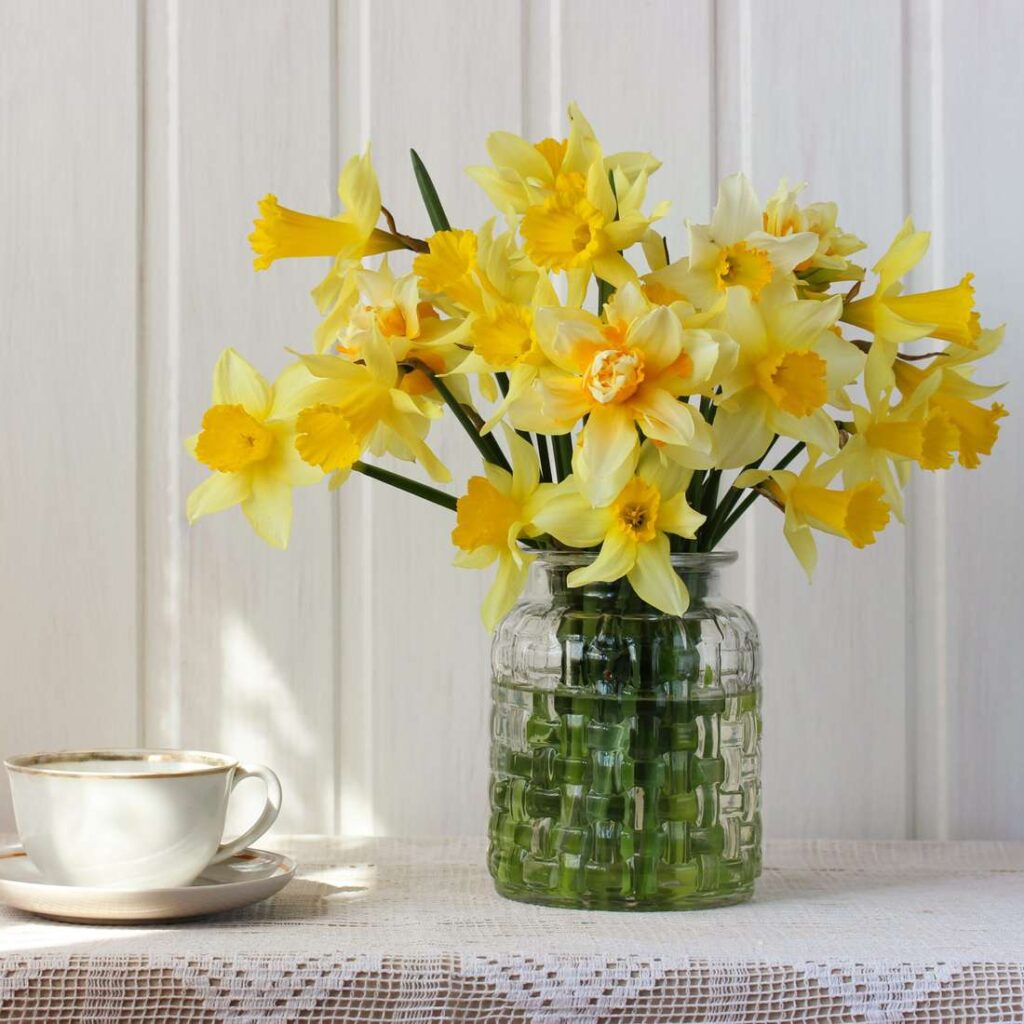
Water Deeply and Evenly
When watering, moisten the soil to a depth of 6–8 inches. This ensures water reaches the roots and developing bulbs.
Check Soil Moisture Before Watering
Use your finger or a moisture meter to test the top 1–2 inches of soil. If it feels dry, it’s time to water.
Water at the Base
Water around the base of the plant rather than over the leaves and flowers. Wet foliage encourages fungal diseases.
Use Room-Temperature Water
Extreme cold water can shock roots, especially in early spring.
Signs of Overwatering and Underwatering in Daffodils
Identifying water stress symptoms can help you quickly adjust your care routine.
Signs of Overwatering:
- Yellowing, limp foliage
- Soft, mushy bulbs
- Mold or fungus on soil surface
- Poor blooming or no flowers
Solution: Improve drainage, reduce watering, and remove affected bulbs.
Signs of Underwatering:
- Wilting or drooping leaves
- Dry, crispy leaf edges
- Premature yellowing before flowering
- Underdeveloped blooms
Solution: Increase watering frequency and water deeply.
Special Watering Tips for Potted Daffodil
Daffodils grown in containers require extra care, as pots dry out faster than garden beds:
- Use well-draining potting mix with added sand or perlite.
- Ensure pots have ample drainage holes.
- Water regularly during active growth, and reduce once foliage dies back.
- Avoid leaving water standing in saucers beneath pots.
Additional Daffodil Care Tips
Alongside a good watering routine, follow these care tips for healthy, vibrant daffodils:
Provide Full or Partial Sun
Daffodils bloom best with 6 hours of sunlight daily.
Deadhead Spent Flowers
Remove faded blooms to direct energy back into the bulbs.
Let the Foliage Die Back Naturally
Avoid cutting leaves too soon after flowering — they photosynthesize to feed the bulb for next year’s blooms.
Fertilize After Flowering
Use a balanced fertilizer or bulb food after blooming to replenish bulb nutrients.
Conclusion
So, how often should you water a daffodil?
It depends on the plant’s life cycle stage, climate, soil, and growing conditions:
- During active growth (spring): Water once or twice a week or when the soil is dry 1–2 inches down.
- During dormancy (summer): Stop watering and let the soil dry out.
- Potted daffodils: Water every 2–3 days during bloom, then reduce.
The secret to successful daffodil care lies in keeping soil consistently moist during active growth and dry during dormancy. By understanding this natural rhythm and adjusting your watering habits accordingly, you’ll enjoy healthy, vibrant blooms year after year.
